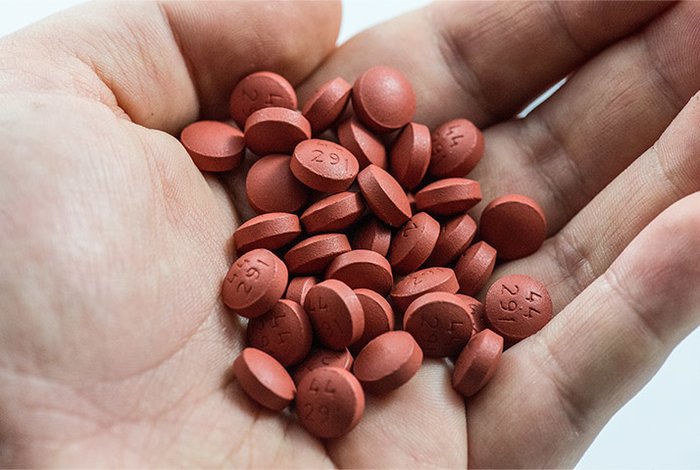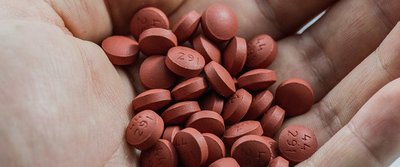Getting bigger and stronger is one byproduct of resistance training. Another is muscle soreness, or the "good pain" linked to the old bodybuilding saying "no pain, no gain." This pain is technically called delayed-onset muscle soreness, or DOMS, and it's very common among lifters.
If you've recently had a killer leg workout, DOMS is the soreness you feel that makes it difficult to walk for 1-3 days after that session. DOMS is thought to be caused by the eccentric (lengthening) portion of the exercise that causes microscopic tears to the muscle fibers. The soreness can be so bad that it's often challenging to sit on the toilet, get in and out of your car, or even walk up a flight of stairs.
While newcomers to weightlifting dread the pain associated with DOMS, it's actually part of the muscle-growth process. When you challenge yourself to failure or near-failure on multiple sets for a specific muscle group, you'll likely experience DOMS after your workout. But what happens when that pain affects your ability to manage your day-to-day life?
Many times, athletes want to continue training even while sore, so they consider something to take the edge off the pain. One common solution to combating DOMS—and other minor injuries—is to take non-steroidal anti-inflammatory drugs, or NSAIDs, like ibuprofen (e.g., Motrin, Advil) or sodium naproxide (e.g., Aleve), which can help reduce your pain.
However, before you reach for that bottle of pain pills after your next brutal workout, get the story on how they might impact your results.

One common solution to combating DOMS—and other minor injuries—is to take non-steroidal anti-inflammatory drugs, or NSAIDs.
NSAIDs and Muscle Building
According to research published in the The Physician and Sports Medicine, since NSAIDs are over-the-counter (OTC) medications and aren't banned from competition by the World Anti-Doping Agency, "athletes often self-administer these medications to prevent pain and inflammation before it occurs. However, scientific evidence for this approach is currently lacking, and athletes should be aware of the potential risks in using NSAIDs as a prophylactic agent. These agents are not benign and can produce significant side effects, including gastrointestinal and cardiovascular conditions as well as musculoskeletal and renal side effects."[1]
But that's not all: there are also performance side effects for the weightlifter to consider. Drugs such as ibuprofen are classified as COX inhibitors, and since COX (cyclooxygenase) activity is a critical component of muscular hypertrophy, there's a clear link: Ibuprofen can inhibit muscular hypertrophy.
In fact, previous research suggests that treatment with ibuprofen can reduce muscle hypertrophy by almost 50 percent, which means that taking a COX inhibitor may very well be counterproductive for muscle gains.[2,3]
While these are intriguing findings, we must keep in mind that these studies were conducted in rodent models. The research still needs to be scrutinized since a handful of studies have also been done on humans and have yielded conflicting results.
One of the first human studies to support the notion that NSAIDs may blunt protein synthesis was published in the American Journal of Physiology, Endocrinology, and Metabolism.[4] Participants were given the maximal over-the-counter dose for ibuprofen, acetaminophen, or a placebo following 10-14 sets of eccentric knee extensors.
Researchers found that rates of protein synthesis were suppressed in groups taking the NSAIDs. Results from this study support the earlier findings that NSAIDs may negatively influence protein metabolism in skeletal muscle.

Research suggests that treatment with ibuprofen can reduce muscle hypertrophy by almost 50 percent.
However, more recent research on human subjects has demonstrated that NSAIDs do not necessarily impact muscle protein synthesis as much as previously thought.[5,6] In fact, there are several studies that have found chronic supplementation (12 weeks) actually improved muscle strength and size.[7,8]
The problem with these studies, however, is that each have their own limitations we must consider. For example, a majority of the research on NSAIDs as it relates to muscle protein synthesis has been done in untrained individuals; hence, the results might yield a different outcome on athletes who are already active and have a larger degree of muscle mass than an untrained person.
Some of the research also looked at only older subjects with osteoarthritis; thus, these results might not be indicative of results for healthy, active individuals. Finally, some of these studies only looked at the effects of NSAIDs on the acute changes in muscular hypertrophy, and these findings may not reflect the long-term adaptations to muscular hypertrophy with prolonged use of NSAIDs.
'Nuff Said: Key NSAID Takeaways

{{caption}}
While there's certainly a time and place to utilize NSAIDs, the key takeaway is that they should be used with caution, in relatively moderate dosages, and for short periods of time.
An article published in the Critical Journal of Sport Medicine discussed the practical management of NSAIDs in athletic injuries and concluded that NSAIDs are not recommended in the treatment of completed fractures, stress fractures at higher risk of nonunion, or in chronic muscle injuries.[9]
While the authors of the article recommended NSAIDs for the management of acute ligament strains, muscle strains, tendinitis, and eccentric muscle injury, they cautioned that the prescription of the NSAID should be judicious and the length of treatment should be kept as short as possible.
NSAIDS can help with short-term pain management, but their use should be minimized not only because of their potential long-term side effects, but also the impact they may have on making substantial gains in muscle mass.
Even with some conflicting research, this much is clear: Don't reach for a bottle of ibuprofen every time you have a slight bout of DOMS. Recognize that the inflammation you're experiencing is part of the muscle-building process, and save NSAIDs for when you really need them.
References
- Warden, S. J. (2010). Prophylactic use of NSAIDs by athletes: a risk/benefit assessment. The Physician and sportsmedicine, (38), 132-8.
- Soltow, Q. A., Betters, J. L., Sellman, J. E., Lira, V. A., Long, J. H., & Criswell, D. S. (2006). Ibuprofen inhibits skeletal muscle hypertrophy in rats. Medicine and Science in Sports and Exercise, 38(5), 840.
- Novak, M. L., Billich, W., Smith, S. M., Sukhija, K. B., McLoughlin, T. J., Hornberger, T. A., & Koh, T. J. (2009). COX-2 inhibitor reduces skeletal muscle hypertrophy in mice. American Journal of Physiology-Regulatory, Integrative and Comparative Physiology, 296(4), R1132-R1139.
- Trappe, T. A., White, F., Lambert, C. P., Cesar, D., Hellerstein, M., & Evans, W. J. (2002). Effect of ibuprofen and acetaminophen on postexercise muscle protein synthesis. American Journal of Physiology-Endocrinology and Metabolism, 282(3), E551-E556.
- Krentz, J. R., Quest, B., Farthing, J. P., Quest, D. W., & Chilibeck, P. D. (2008). The effects of ibuprofen on muscle hypertrophy, strength, and soreness during resistance training. Applied Physiology, Nutrition, and Metabolism, 33(3), 470-475.
- Petersen, S. G., Miller, B. F., Hansen, M., Kjaer, M., & Holm, L. (2011). Exercise and NSAIDs: effect on muscle protein synthesis in patients with knee osteoarthritis. Medicine and Science in Sports and Exercise, 43(3), 425-431.
- Trappe, T. A., Carroll, C. C., Dickinson, J. M., LeMoine, J. K., Haus, J. M., Sullivan, B. E., ... & Hollon, C. J. (2011). Influence of acetaminophen and ibuprofen on skeletal muscle adaptations to resistance exercise in older adults. American Journal of Physiology-Regulatory, Integrative and Comparative Physiology, 300(3), R655-R662.
- Petersen, S. G., Beyer, N., Hansen, M., Holm, L., Aagaard, P., Mackey, A. L., & Kjaer, M. (2011). Nonsteroidal anti-inflammatory drug or glucosamine reduced pain and improved muscle strength with resistance training in a randomized controlled trial of knee osteoarthritis patients. Archives of Physical Medicine and Rehabilitation, 92(8), 1185-1193.
- Mehallo, C. J., Drezner, J. A., & Bytomski, J. R. (2006). Practical management: nonsteroidal antiinflammatory drug (NSAID) use in athletic injuries. Clinical Journal of Sport Medicine, 16(2), 170-174.

